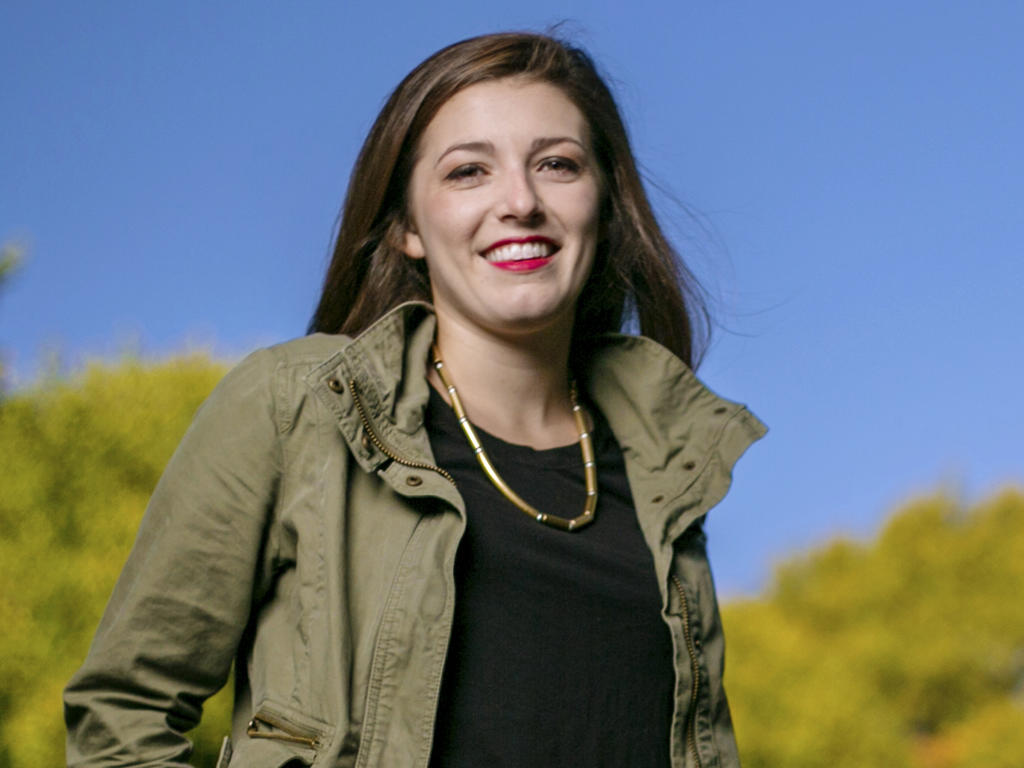Hometown: Eden, New York
Major: Art and Art History
Academic interests: Understanding art history through the study of the movements and reactions that have led to contemporary art; gaining a greater knowledge of an artist’s studio practice through the creation of one’s own art and process; spreading a passion for art to all ages.
Extracurricular activities: President of Rho Lambda, Vice President of Order of Omega, Peer Assistant Leader, Gamma Chi Leader, Senior Class Council Publicity Co-Chair, Art Consultant Intern, ΧΩ Campus Activities Coordinator
Tell us the story of how you got to Rhodes College.
I am asked this question a lot, since I am from the North. When applying to colleges my senior year of high school, I knew I wanted to leave New York. Growing up, my father’s business led my family on many trips south to Seabrook and Kiawah— coastal barrier islands outside of Charleston, SC. I fell in love with the atmosphere of Southern cities and made a point to only apply to art and liberal arts schools in these historic hubs. Everyone I talked to during the process urged me to visit Rhodes. When it came down to it, I chose the liberal arts curriculum over art school, and here I am today.
How have you changed since beginning your studies at Rhodes?
Rhodes has given me the opportunity—and the confidence—to become involved in experiences I would have never even considered as a senior in high school.
Last fall, I was accepted into Rhodes’ European Studies program. Instead of seeing the great works of Western art projected onto a screen in Clough Hall, I was able to stand in front of them, where the artists themselves had stood centuries before. Not many undergraduates can say that they went on a private tour of the Sistine Chapel or studied six weeks at the historic Lincoln College in Oxford. This trip took me out of the college bubble and provided me with an unforgettable experience that shifted my perspective of the world around me.
How have your majors in art and art history complemented each other?
By creating my own art and developing my own studio practice, I have gained a greater appreciation for the canonical work I have studied in textbooks. I found greater appreciation for technical skill when taught to mimic techniques from art history in studio classes at Rhodes. Art and art history may complement each other in that way, but it’s also a challenge. While making studio art, I think in a visual language, yet the art history degree forces me to convert that visual language into a verbal language. Luckily, when I run into any struggles along the way, I have not only one but several professors to assist me; that is the effect of studying the two disciplines in conjunction and the benefit of small departments at Rhodes.
Last summer you founded an art camp for children in the Refugee Empowerment Program (REP). What inspired you to do this? What did you gain from this experience?
One day after tutoring at the Refugee Empowerment Program, I was doodling with several of the children. Once they started to doodle, the children that had been running around seconds before settled down and became completely invested in their creations. I wanted to see more of the children’s artistic capabilities. After talking to Professor Liz Daggett about drafting a CODA (Center for the Outreach in the Development of the Arts) proposal, brainstorming project ideas with Professor Erin Harmon, and attending countless meetings with the REP director, Cam Blackmon, the idea came to fruition. I’m also indebted to a talented group of art majors at Rhodes—McKenzie Drake ‘17, Malerie McDowell ‘17, and Hannah Lewellen ‘16—who agreed to help and made the camp, and then the art show at Crosstown Arts, such a success.
Throughout the five weeks, I learned a lot about how to problem-solve on the fly if something unexpected occurred. Listening and talking to the children at the camp was eye opening because of the cultural differences between the counselors, campers, and families that attended. Through all the highs and lows, it was incredibly rewarding to see the children running around and sliding on Crosstown Art’s gallery floor, with four weeks of art projects hanging on the walls above them.
I have never really thought of myself as a leader, but when I started the art camp I was forced to step into that leadership role. Each day produced its own successes and failures, but by the end of the camp, we were able to look back on how art had positively influenced the campers in some small way.

